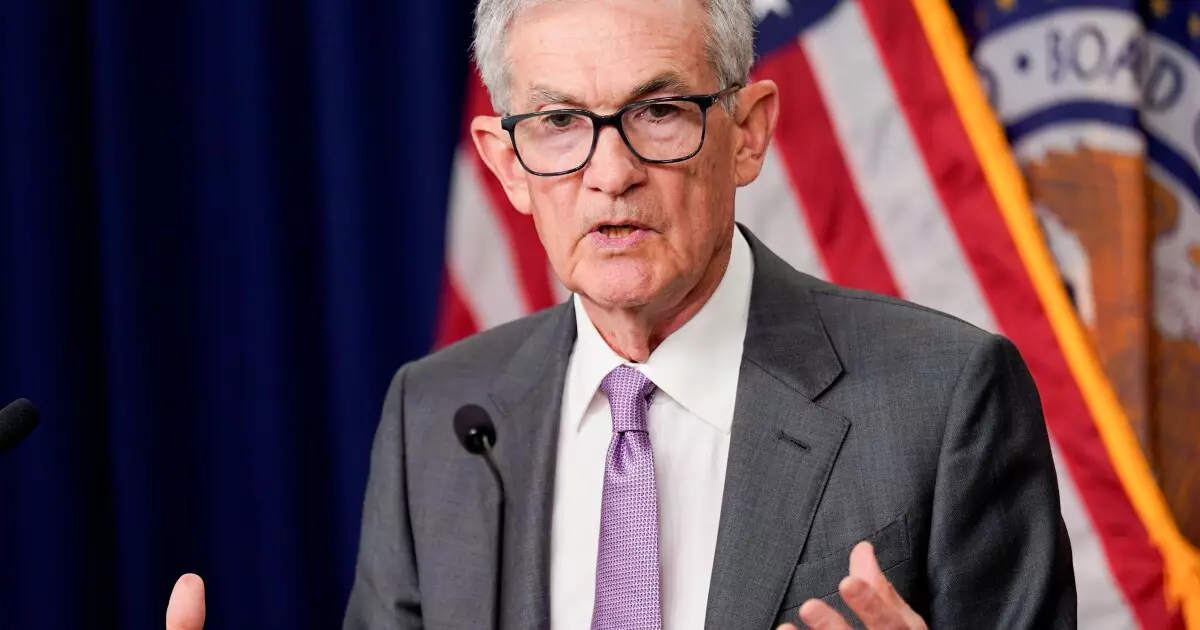In the realm of economic policy-making, inflation and unemployment serve as twin pillars guiding the actions of central banks, particularly the Federal Reserve. Monetary policy is a delicate balancing act where the Fed must navigate the intricate interplay between these two factors to foster a stable economy. Recently, however, Jerome Powell, the chair of the Federal Reserve, has brought attention to a third, critical element: personal savings. This development reflects a nuanced understanding of how savings rates can serve as an indicator of consumer confidence and economic vitality.
Historically, personal savings rates have been a telling statistic indicating the health of the economy. A low savings rate often signifies a lack of consumer confidence, leading individuals to spend rather than save. In light of recent observations, Powell pointed out that measures of gross domestic income (GDI) have lagged behind gross domestic product (GDP), a phenomenon that initially raised alarms about the state of personal savings. However, a surprising revision in GDI figures has brought the savings rate up from 4.8% to 5.2%, thereby easing concerns at the Fed regarding consumer well-being.
Powell’s assertion that no substantial gap exists between GDI and GDP is pivotal. The Federal Reserve’s confidence in this relationship implies that economic measures are finally aligning, indicating a potential shift towards stability. The revisions suggest that there may not be significant gaps in measurement—a point that effectively nullifies previous fears about economic fragility. This adjustment in GDI also indicates healthier income projections for consumers, which is critical for evaluating how confidently people can spend their earnings.
An increase in personal savings signals that consumers may have a more substantial financial cushion, suggesting they are not overspending relative to their income. This insight leads to a broader economic implication: if consumers have more savings, they are likely to continue expenditure at levels that support economic growth. Thus, Powell’s observations offer optimism, bolstering the belief that the consumer base remains robust, enough to withstand economic fluctuations.
In the backdrop of these developments, Powell discussed the labor market’s condition, a significant determinant in shaping the Fed’s monetary policy. The relationship between employment rates and consumer spending is well-documented; as employment rises, so does spending. Powell emphasized that relevant data on inflation, such as the consumer price index and personal consumption expenditure, will be significant as the FOMC prepares for future policy moves.
Earlier this month, the Fed initiated a significant policy change by lowering the benchmark interest rate by half a percentage point—the first such adjustment since 2020. This step was particularly noteworthy not only for its timing but also for its messaging. Powell underscored that the rate cut should not be misconstrued as a signal of economic weakness; rather, it reflects an optimistic recalibration that aligns with an improving market environment.
Importantly, Powell conveyed a sense of cautious optimism about the trajectory of economic growth and inflation levels, indicating that the Fed plans to maintain momentum in supporting the labor market. Nevertheless, he also emphasized the need for flexibility, stating that future policy shifts will depend on ongoing economic developments. “We are not on any preset course,” Powell clarified, underscoring the dynamic nature of monetary policy crafting.
The Road Ahead: A Balanced Approach to Monetary Policy
Looking forward, the Federal Reserve remains poised to continue adjusting interest rates during the remaining meetings of the year. The intricacies of economic data and how it evolves will guide decision-making, reinforcing that the path ahead is not rigidly defined. Powell stressed that risks to the economy are bilateral: while there are positive indicators, caution is warranted in interpreting these metrics.
As the Federal Reserve navigates the complexities of inflation, unemployment, and personal savings, the interplay between these elements will remain critical. Powell’s insights reveal an increasingly sophisticated understanding of the economic landscape, as the Fed balances monetary policy to foster growth while remaining vigilant to potential risks. The evolving narrative suggests that the Federal Reserve is on a path towards a more measured approach, one that seeks to bolster confidence among consumers and maintain stability in uncertain economic times.

